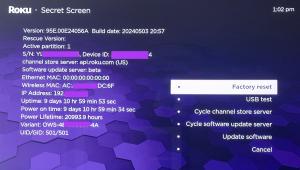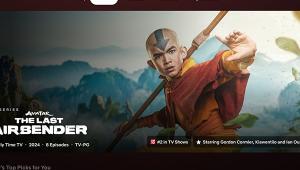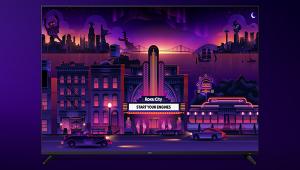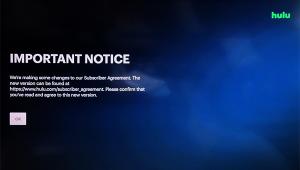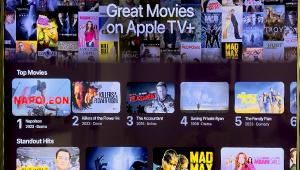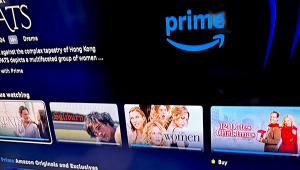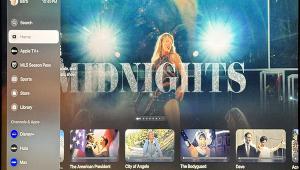Yes of course it does. Watching short little videos is just fine but would I like it if that was all that was available? Absolutely Not! My favorite watching mode is in my living room on my 55" Panasonic Plasma. Not on a tiny screen. Also I still enjoy movies and TV as it's difficult to tell an interesting story in anything less than 1 hour.
Will Short Video Streaming Kill the Feature Film?

The panel was moderated by “Wired” Executive Editor, Jason Tanz and included: Marsha Oglesby, Executive Producer of the WIGS YouTube channel; Greg Whiteley, documentary filmmaker of MITT about former presidential candidate, Mitt Romney; Scilla Andreen, CEO and Co-Founder of IndieFlix streaming service; Jen Roskind, Head of Production at Cracked Studios comedy short videos for cracked.com ; and Bernard Fritsch, Chairman and CEO Of StarClub social media platform.
After learning about each of the panelists, discussion became lively on the topic of short form videos. It seems that 3 or 5-minute videos may be popular, but film lovers fear the demise of feature-length films. Bernard Fritsch reported that their research of 3 million viewers showed that the optimal short video should be 7-1/2 minutes. Tanz explained that “short videos used to mean creating something for people to watch on their desktops during lunch, but now it can mean mobile, or on couch watching Roku or Apple TV.” Jen Roskind agreed, saying that their videos, including 6-minute episodes of their new web miniseries parody Adventures in Jedi School are frequently watched on TV screens.
Andreen agreed that forty percent of IndieFlix videos are shorter TV shows, and added that seventy percent of Netflix videos are TV programming. She explained that the upcoming IndieFlix app will include an option for users to choose the length and type of video and be offered suggestions: “I have ten minutes and I want to watch a comedy.”
The idea that our entertainment should be in short bursts created dissension among the filmmaker attendees and panelists who prefer the developed story of a feature-length film, or hour-long TV show. Fritsch acknowledged that quality keeps our attention longer, “The trend might go up (to longer video lengths) if we keep on producing quality product. Think about social media videos two to three years ago, it was basically (no good). The more quality comes in, the more attention you keep.” Tanz remarked that with streaming video, you’re not going to the theater, putting down your money and committing to a movie. The filmmaker has to create a story that will resell the viewer every minute.
“People may not have time to watch a 2-hour feature film but they will watch thirteen 5-minute episodes at once,” bemoaned Whiteley. Andreen explained that these short episodes are “nibbles and stops” and you wouldn’t want to nibble a movie. Whitely chimed in, “We have commitment issues.”
When a series of short web videos does hook a viewer, they are willing to binge-view several episodes in a single sitting. Launched in May 2012, by writer/director/producer Jon Avnet (Black Swan, Risky Business), WIGS originally created short episodes for an original programming YouTube channel. This series of short web videos are typically under 10-minutes but have the same production quality you would find in many TV shows or features. WIGS shows are a perfect example of cross-pollination of content. Oglesby described how Hulu is now streaming hour-long episodes by stringing together several of the short videos. The videos include Blue starring Julia Stiles and Sarah Paulson as well as a number of other series featuring successful actresses Jennifer Garner, Virginia Madsen, Steven Moyer, Jeanne Tripplehorn, Rosanna Arquette and many others. She also explained that their shows may be an incubator for TV series for the Fox TV network. This could become a trend for TV Networks to pick up popular web series as the show will be a proven commodity with a a built-in following from the web.
The other change in the landscape of online streaming media concerns theatrical releases. The day of the panel, March 14, 2013, was also the simultaneous release date of the Veronica Mars feature both in theaters and online through iTunes and Amazon Instant Video. Originally a TV series on Fox Network, the show was cancelled in 2007. When creator, Rob Thomas went back to Warners to pitch the idea for the film, they passed. Thomas took it to Kickstarter and raised $5.7 million to make the film. Another example of cross-pollination, this was a TV series that became a movie and a streaming movie, and was financed by the fans who wanted it.
Greg Whiteley’s documentary MITT was similarly part of the changing theatrical release landscape. After the 7 years it took Whiteley to complete the film, he found himself in a meeting with potential documentary buyers that included the usual suspects—Showtime, HBO, the Weinsteins, and Miramax. There were two new companies also represented in the room. One was CNN who has recently become huge player in documentary films. The other was Netflix, a company filmmakers typically dealt with after the film had been released in theaters. Netflix made a compelling deal with Whiteley and the film’s producers allowing them to choose when their film would be released in theaters and on Netflix. Unlike theaters who must schedule a release to optimize opening weekend box office Netflix can release a film at any time. Netflix doesn’t care how well the movie does in the theaters, and they are not concerned with when subscribers view the film. Netflix can offer a film in their library for years and it doesn’t matter if it is viewed on the first day or in the 12th year. The filmmakers opted to reduce their publicity and advertising costs by releasing the film following the buzz created by its premiere at the Sundance Film Festival.
Lines continue to blur as we stream more content directly to our TVs while a movie is still in the theater. Short videos become TV series on Network TV. As long as we are watching quality content, does it ultimately matter how or where we watch it?
- Log in or register to post comments


